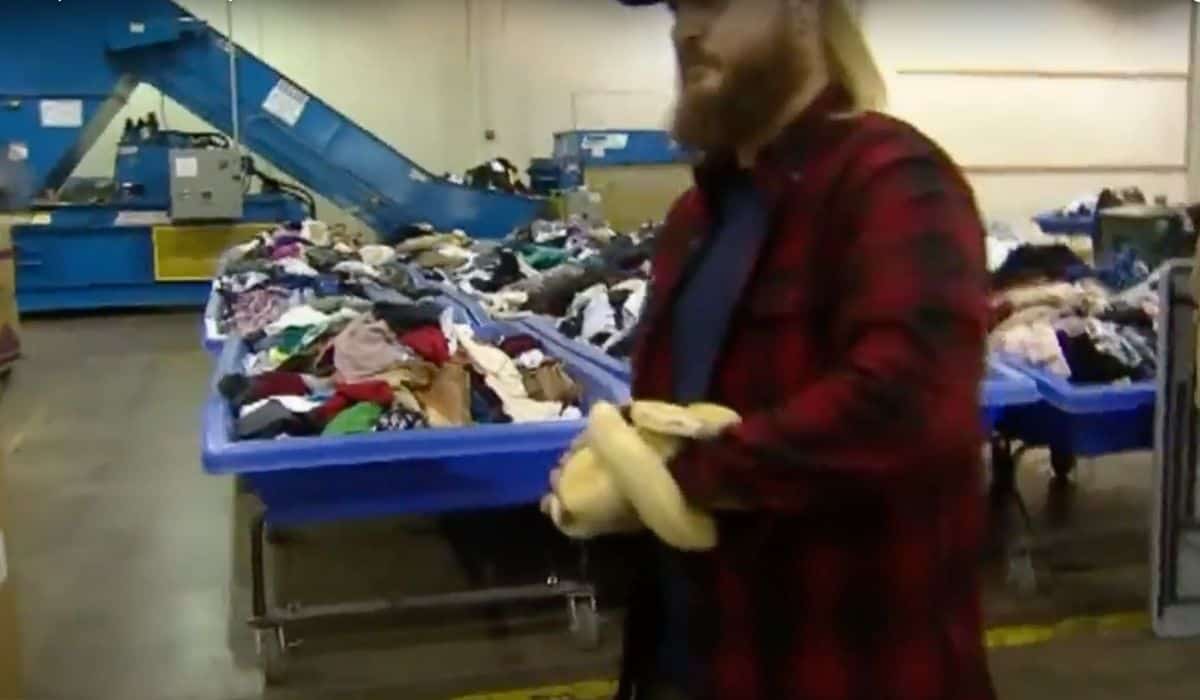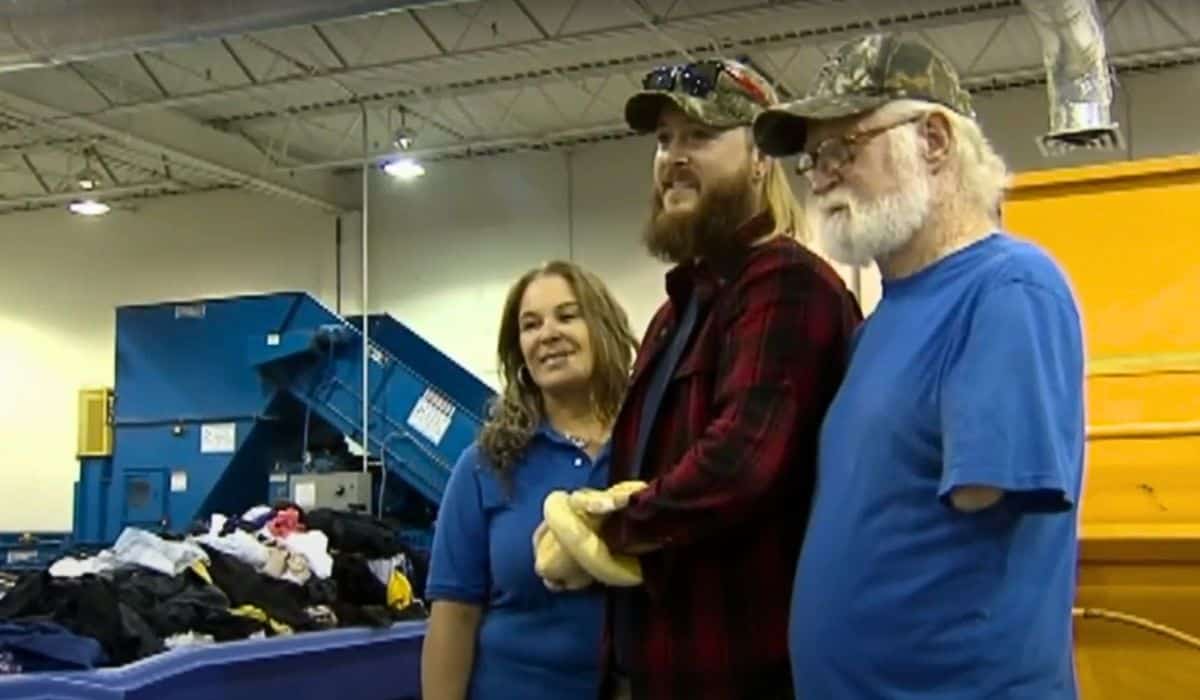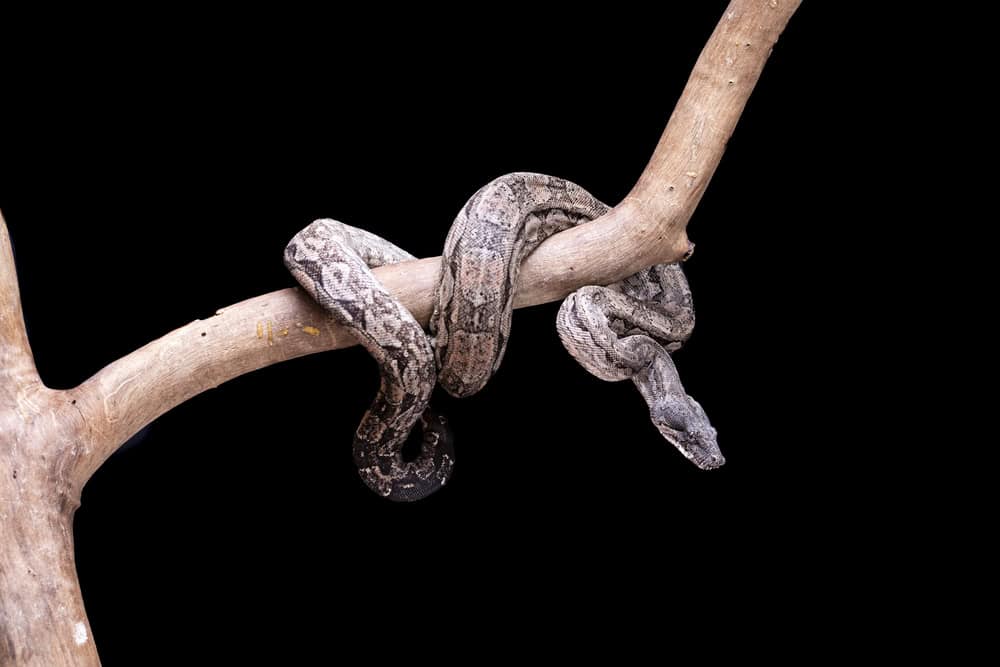Goodwill workers can attest to finding all sorts of things in their donations bin, but this find really takes the cake – a goodwill worker was especially shocked at finding a very real and very alive Boa Constrictor
Goodwill Worker Thought She Was Being Pranked

A typical day at Goodwill turned into a surprising event when a worker stumbled upon a live snake inside a donation bin. Initially, she thought it was a prank set up by her colleagues. Little did she know, this encounter would become a memorable incident.
Realizing It Was a Real Snake

The worker soon realized that the snake was perhaps not a joke. To assess whether it was real or not, she threw a few small beads at it. This is when the snake stuck out its tongue, and it dawned on her that this was a very real situation and she needed help immediately.
Rescuing the Snake

Luckily, the store manager at this Goodwill was an experienced snake owner and lover. He knew exactly how to handle the snake and took it into his care while they were searching for the real owner.
Miraculously Reunited With Its Owner

Miraculously, after some searching, they managed to find the owner. Apparently, the snake and its owner had been separated for four and a half months – and we’ll never know how it ended up at Goodwill.
A 6-Year-Old Boa

Once they’d located the owner, they could also ascertain what kind of snake it was. Turns out it was a 6-year-old Boa constrictor who went by the name of Toki. Boa constrictors are non-venomous snakes that use constriction to subdue their prey, definitely not something you encounter everyday in the state of Texas.
Texas and Its Boa Constrictor Population

Texas is home to a variety of snake species, including boa constrictors. While not native to the region, these snakes are often kept as pets. The warm climate and vast landscapes provide a suitable environment for their survival.
How to Handle Unexpected Snake Encounters

Encountering a snake unexpectedly can be alarming. It’s important to remain calm and avoid sudden movements. Contacting local animal control or a wildlife expert is crucial for safely handling and relocating the snake without harm.
Understanding Boa Constrictor Behavior

Boa constrictors are known for their unique hunting method, which involves constricting their prey until it is subdued. Despite their intimidating size, they are generally docile creatures and pose little threat to humans when handled correctly.
A Massive Snake

These snakes are amongst one of the largest species in the whole world. Boa constrictors can grow to remarkable (and terrifying) lengths, with some individuals reaching up to 13 feet and weighing over 100 pounds.
Safe Practices for Pet Snake Owners

Owning a pet snake, such as a boa constrictor, comes with responsibilities. Providing a secure enclosure, regular feeding, and proper veterinary care are essential. Owners should also ensure their pets do not escape, which can prevent incidents like the one at Goodwill.
Boa Constrictor Lifespan and Growth

Boa constrictors have a long lifespan, often living up to 30 years in captivity. Their growth rate is influenced by factors such as diet, environment, and genetics. Providing optimal care can ensure a healthy and long life for these snakes.
Handling and Interaction Tips for Boa Constrictors

Proper handling techniques are crucial for interacting with boa constrictors. Supporting their body weight and avoiding sudden movements can prevent stress. Regular, gentle interaction can help build trust between the snake and its owner.
Understanding Boa Constrictor Diet and Feeding Habits

Boa constrictors primarily feed on small mammals and birds. In captivity, they are often fed pre-killed rodents. Understanding their dietary needs and feeding habits is essential for providing proper nutrition and preventing health problems.
Creating an Ideal Habitat for Boa Constrictors

An ideal habitat for a boa constrictor includes a spacious enclosure, appropriate temperature gradients, and hiding spots. Maintaining proper humidity levels and providing climbing opportunities can enhance their quality of life.
The Color-Changing Capabilities of Boas

Some boa constrictors can change their skin color to blend into their surroundings. This ability helps them avoid predators and sneak up on prey.
Boa Constrictors’ Infrared Vision for Night Hunting

Boa constrictors have heat-sensing pits along their lips, enabling them to detect the body heat of prey, even in complete darkness.
Twist and Squeeze

A boa constrictor’s method of killing prey involves powerful constriction, cutting off blood flow and causing death by circulatory arrest rather than suffocation.
Live Birth Wonders

Unlike many reptiles that lay eggs, boa constrictors give birth to live young. This reproductive strategy offers better survival rates for their offspring.
Boa Constrictors’ Unique Thermoregulation

Boa constrictors can regulate their body temperature by basking in the sun or seeking shade, allowing them to thrive in a range of environments.
Goodwill Worker Finding Boa Constrictor: Conclusion

This story highlights how exotic snakes can pop up anywhere when we least expect it. Keeping pet snakes is a fascinating hobby, but when they escape (and they do – quite often actually) it’s not as fun for those around you. After all, it’s more common than not to be scared of snakes (I’m absolutely terrified.)
Thank you for reading this article about the goodwill worker shocked at finding a boa constrictor on a normal day at work! For more snakey things, take a look at these posts:
- Snake Creeps Up on Unsuspecting Mother and Baby In Chilling Encounter
- Rare and Highly Toxic Eastern Massasauga Rattlesnake Found in Ohio
- California Man Receives Live Rattlesnake in Mail, Suspects Attempted Murder
Join our Forum for free today!


